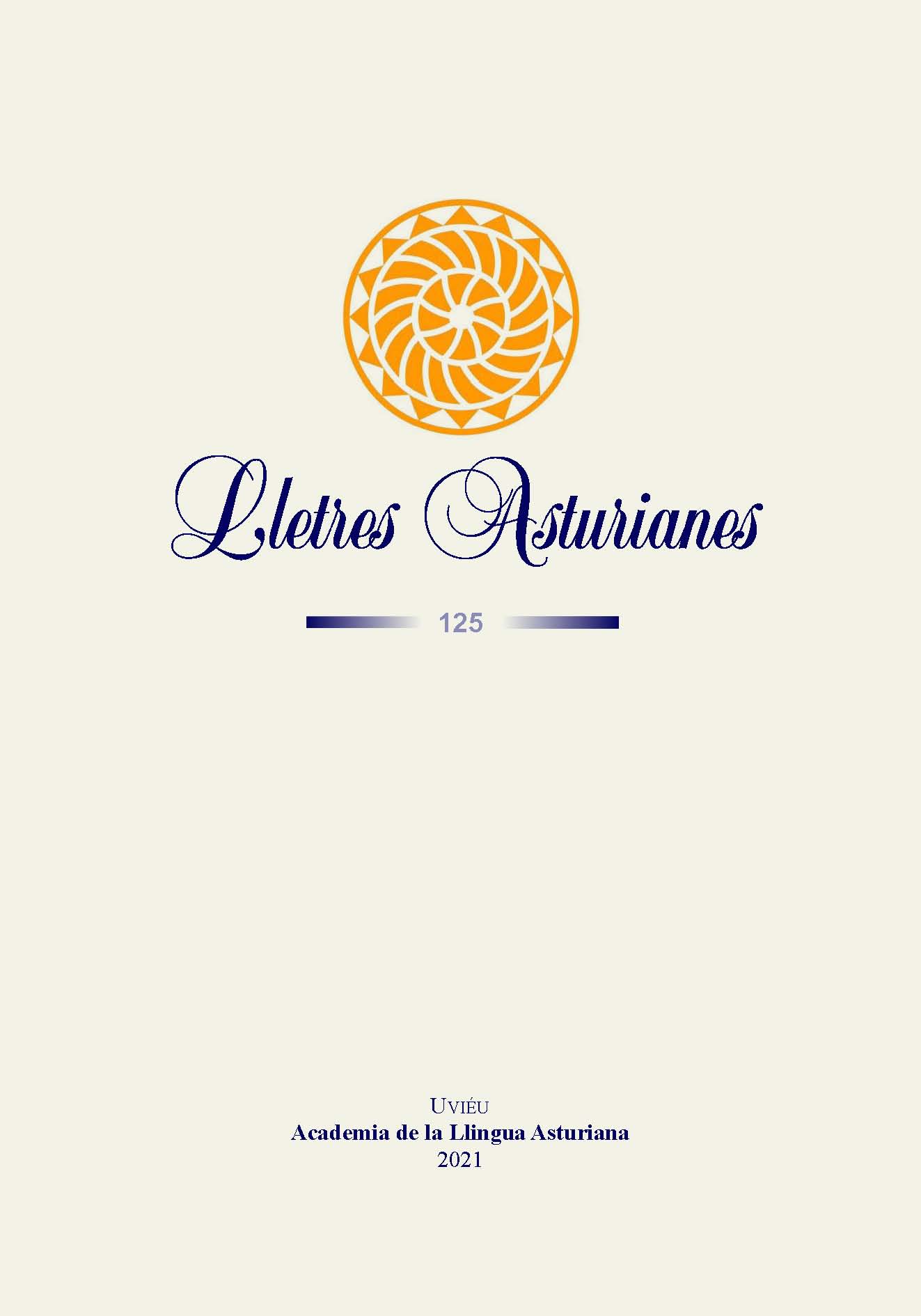Abstract
In the year 2020, and as a result of the last coronavirus pandemic, neologisms and lexical constructions were introduced into our everyday vocabulary. This paper aims to question whether the Asturian language was able to absorb and adapt this lexicon and, therefore, whether it can be considered a living language with the capacity to update to new socio-cultural contexts. For this purpose, the specific terminology of the pandemic was extracted from a corpus of journalistic texts from four different Asturian-language media, published between January and December 2020. The article is divided into four main parts. The first one introduces the subject and the methodology that will be followed in the study. The second, which observes the diachronic nature of this neological phenomenon related to the impact of Covid-19, focuses on the terminological analysis of each of the months. Thus, it will be possible to see which words and constructions are repeated and used more throughout the year, or how the themes of the lexicon change according to the socio-cultural and political evolution of the pandemic. The third point develops a discussion of the most problematic aspects -from a lexical perspective-, such as the degree of synonymy with close terms, the traditional references to the words that will be used or the gender marking for the disease caused by the virus SARS-CoV-2. Finally, conclusions are presented, with the intention of answering the research question.
References
Academia de la Llingua Asturiana. (2001). Gramática de la Llingua Asturiana. Uviéu: Academia de la Llingua Asturiana
Academia de la Llingua Asturiana. (2012). Normes Ortográfiques. Uviéu: Academia de la Llingua Asturiana
Academia de la Llingua Asturiana. (e.f). Brote. Diccionariu de la Llingua Asturiana. Recuperao’l 20 de febreru de 2021. http://www.academiadelallingua.com/diccionariu/index.php
Academia de la Llingua Asturiana. (e.f). Executivu. Diccionariu de la Llingua Asturiana. Recuperao’l 17 de marzu de 2021. http://www.academiadelallingua.com/diccionariu/index.php?cod=24201
Academia de la Llingua Asturiana. (e.f). Guardar. Diccionariu de la Llingua Asturiana. Recuperao’l 17 de marzu de 2021. http://www.academiadelallingua.com/diccionariu/index.php
Andrés Díaz, R. d’, Díaz Fanjul, V., & Gutiérrez Rodríguez, S. (2013). Palabres nueves n’asturianu. Uviéu: Trabe.
Bird, S., Klein, E., & Loper, E. (2009). Accessing Text Corpora and Lexical Resources. Natural Language Processing with Python. http://www.nltk.org/book/ch02.html
Boletín Oficial del Principáu d'Asturies (13 de marzu de 2020). Resolución de 12 de marzo de 2020, de la Consejería de Salud, por la que se adoptan medidas en materia de salud pública en relación con la actividad presencial. Gobierno del Principado de Asturias. https://sede.asturias.es/bopa/2020/03/13/2020-02686.pdf
BUSCatermos (e.f.) Covid-19. BUSCatermos. Recuperao’l 10 d’abril de 2021. https://aplicacions.usc.es/buscatermos/publica/index.htm
Educastur (12 de marzu de 2020). Situación centros educativos. Educastur. https://www.educastur.es/-/suspendida-temporalmente-la-actividad-presencial-en-cinco-centros-educativos
Fernández McClintock, J. (1996). Campos léxicos y vida cultural n’Asturies. Uviéu: Academia de la Llingua Asturiana.
Fundéu (12 de xineru de 2021). «La COVID-19, nombre de la enfermedad del coronavirus». Fundéu RAE. https://www.fundeu.es/recomendacion/covid-19-nombre-de-la-enfermedad-del-coronavirus/
Gelbukh, A. (xineru - xunu de 2010). Procesamiento de Lenguaje Natural y sus Aplicaciones. Komputer Sapiens, 1, 6-11. https://www.gelbukh.com/CV/Publications/2010/Procesamiento%20de%20lenguaje%20natural%20y%20sus%20aplicaciones.pdf
Hernández, M., & Gómez, M. (xunetu de 2013). Aplicaciones de Procesamiento de Lenguaje Natural. Revista Politécnica, 32(1), 87-97. https://revistapolitecnica.epn.edu.ec/ojs2/index.php/revista_politecnica2/article/view/32/pdf
Mayordomo, L. (13 de xineru de 2021). La covid-19 dejó 1.548 fallecidos en Asturias en 2020. El Comercio. https://www.elcomercio.es/asturias/covid19-asturias-2020-cifras-fallecidos-1548-20210113143218-nt.html
Ministerio de Sanidad. (28 d’abril de 2020). Plan para la transicción hacia una nueva normalidad. https://www.lamoncloa.gob.es/consejodeministros/resumenes/Documents/2020/PlanTransicionNuevaNormalidad.pdf
Oliver, A. (e.f.). Introducció a la programació en Python. Universitat Oberta de Catalunya.
Real Academia Española. (e.f). Cepa. Diccionario de la lengua española. Recuperao’l 17 de marzu de 2021. https://dle.rae.es/cepa
Real Academia Española. (e.f). Mascarilla. Diccionario de la lengua española. Recuperao’l 2 de marzu de 2021. https://dle.rae.es/mascarilla
Suari, C. (2020). L’enseñu virtual de la llingua asturiana (1996-2019): averamientu etnográficu, estudiu evaluativu y propuestes de futuru. Lletres Asturianes, (122), 165-196.
Teresa Cabré, M. (2005). Importancia de la terminología en la fijación de la lengua: la planificación terminológica. La terminología: representación y comunicación. Documenta Universitaria.
TermAst. (e.f.). TermAst. Recuperao’l 25 de marzu de 2021. http://www.academiadelallingua.com/termast/
TermAst. (e.f). Teatru y Artes Escéniques. TermAst. Recuperao’l 1 d’abril de 2021. http://www.academiadelallingua.com/termast/terminoloxia.php?area=terminosteatru
TermCat. (e.f.). Covid-19. TermCat. Recuperao’l 10 d’abril de 2021. https://www.termcat.cat/ca/diccionaris-en-linia/286

